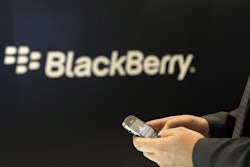In 1893, electric light technology was put on display at the world’s fair in Chicago. These lights were installed inside paper-mache buildings, and Chicago earned the nickname "White City". A lesser known fact is that lighting caught many of the paper buildings on fire. These fires resulted in the creation of Underwriters Laboratories, or UL.
Now, almost 125 years later, UL provides a safe path for new lighting technologies to be installed into commercial buildings. That path is UL1598C Certification.
UL And LED Retrofit
UL1598C certification provides building owners and managers a safety standard when considering LED Retrofit. Certified LED Retrofit products are labeled as UL ‘CLASSIFIED’. By using the word ‘classified’ UL can distinguish field-installed LED Retrofit products from Fixtures, which bear the “LISTED” mark, and LED Lamps, which bear the ‘RECOGNIZED’ mark.
What Does UL LED Retrofit Certified Mean?
Certified LED Retrofit kits are truly kits — as they must include the following:
LED Retrofit Drivers, Modules, & Engines
These are the LED components that provide power conversion and light. These come in many shapes and sizes, and are typically designed for specific fixture types.
LED Retrofit kits are evaluated in the same way as full LED fixtures, providing confidence in the field safety of the LED Retrofit.
Fixture Types
LED Retrofit Kits are typically designed for specific fixture shapes, sizes and light outputs. UL certification requires that LED Retrofit kits meet specific requirements for installation into various fixture types. These requirements typically vary between surface-mounted and recessed fixtures, open and sealed fixtures, and fixtures rated for dry, damp and wet locations. Interior volume of a fixture also plays an important role.
Traditional light source is also a factor in the certification process.
The UL classification label on the LED Retrofit Kit will provide information around the appropriate fixture types, lamp types and building areas where the LED Retrofit products can be safely installed.
Installation Hardware
Installation hardware is also evaluated by UL to ensure that the installer has everything necessary to safely install the LED Retrofit kit. Typically this includes wirenuts and 8/32 screws for mounting to the fixture or junction box.
Installation Process
The final piece of a UL Certified LED Retrofit kit is the installation instructions and process. This provides a certified path for installers to follow, to insure safe field-installation. These instructions can vary in complexity from manufacturer to manufacturer.
Often a retrofit will require going above and beyond UL requirements, by removing the existing lamp-holders and ballasts.
In many cases, the existing lamp-holders are yellow and brittle, and no longer suitable to make an electrical connection. They can even crumble. Over time, the heat and radiation effects of Pin-CFL lamps can be highly damaging to lamp holders, and this equipment should not be reused.
Ballasts present a different issue. Over the life of a building, ballasts are replaced with a wide variety of replacement parts. It is highly unlikely that 100 percent of the ballasts in any given fixture type are all exactly the same.
Furthermore, LED bulbs that rely on existing ballasts, rarely meet their published wattage, and are only compatible with a handful of ballasts.
In most cases, the only way to safely retrofit with LED bulb solutions is to remove both the existing lamp-holders and the ballasts.
It’s significantly cheaper to retrofit right once, than to retrofit poorly once, and then correct the installation later.
How Can I Tell If A LED Retrofit Is UL Certified?
UL certified LED Retrofit kits will be labeled with UL Classified mark. The manufacturer can also be looked up on UL’s Certification Database.






















